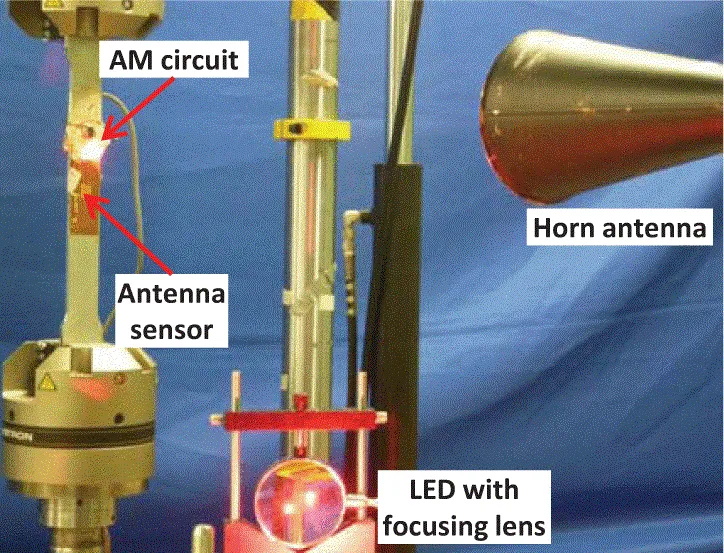Flexible Wireless Antenna Sensor: A Review
The advent of micro-fabrication technology had made it possible to embed multiple sensors in flexible membranes or ‘skins’ as opposed to a single sensor.These ‘skins’ can conform and stretch over large, irregular areas making them very useful in varied fields like robotics, healthcare and flight control.
One obvious hindrance in this field has been the complexity of electric wiring between the sensors and the data acquisition system. Solution to this is micro-strip patch antenna technology, where sensor itself serves as a wireless transmitter, eliminating the need of external electric wiring.
A patch antenna is basically an electromagnetic resonator consisting of a radiation patchand a conductive ground plane separated by a dielectric substrate. The antenna resonates at distinct frequencies whose bandwidth depends on the substrate’sheight and dielectric constant and the dimensions of the radiation patch. Any change in electrical length of strip antenna causes aninversely proportional shift in its resonance frequency.
This characteristic of antenna can be used for wireless strain sensing and crack detection for Structural Health Monitoring where even a small crack can lead to catastrophic failures of large structures.The antenna sensor is wirelessly interrogated using the principle of backscattering. The antenna catchesonly that part of the interrogation signal,caused of an applied strain or crack on the structure, which matches its resonant frequency. This signal is reflected at the antenna termination and radiated back to source. Thus the antenna’s resonant frequency gets encoded in the antenna mode backscattering.The problem of self-jamming of antenna mode backscattering due to the presence of stronger structural mode backscattering is addressed by techniques such as the impedance-switching or the amplitude modulation. A Vector Network Analyzerplays a crucial role in impedance-switching scheme.
Smaller antenna patch resulting into higher resonant frequencies ensures higher sensitivity of the sensor skin but it increases the free-space transmission losses as well. Hence as a tradeoff these antenna sensors are designed for 6 to 10 GHz range of operation. The thin Kapton film proves a suitable substrate as it is flexible, thermally stable, has excellent mechanical strength, low dielectric losses and offers high Q-factor.
Nowadays, the radiation patchmade of copper film is directly fabricated on the Kapton film using lithographic micro-fabrication process. To improve sensor reliability another flexible layer of Polydimethylsiloxane (PDMS) can be introduced underneath the Kapton film to reduce the strain transfer from the large deformation of the host structure to the antenna patch.This patch antenna is bonded on the structure to be monitored. When strain is applied on the structure, it will elongate or contract the radiation patch, causing the antenna’s resonant frequencies to shift correspondingly. Similarly, a crack in the ground plane will force the current to flow around it increasing the effective electrical length of the patch antenna, which shifts the antenna’s resonant frequencies. Both the crack growth and the crack orientation can be detected by monitoring the antenna’s resonant frequency shifts. To distinguish between a singlelarge crack and multiple small cracks in the structure is an area which is under investigation.
To cover large structural area a sensor array is needed. Since the crack information is encoded in the resonant frequency of the antenna sensor, it is achieved by exploiting frequency division multiplexing for adding upmultiple antenna sensors to form the sensor array. Alternatively selective remote switching of sensors for interrogation also serves the purpose.
Wireless flexible sensor skins hold great potentials in diverse fields such as automation and control, communication and monitoring systems.




